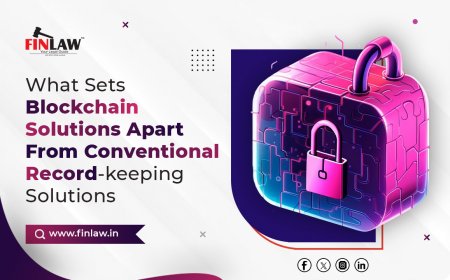How to Start a Crypto Exchange: Step-by-Step Guide for 2025
Learn how to start a crypto exchange in India in 2025 with this step-by-step guide covering legal, tech, marketing, and compliance essentials.

Cryptocurrency adoption in India is reaching new heights. More people are exploring digital assets, making crypto exchanges the crucial gateway to this exciting financial frontier. If you're keen on how to start a crypto exchange in India in 2025, this guide will equip you with everything you need to know—from market realities and regulations to technology and marketing strategies.
Why Start a Crypto Exchange in India in 2025?
India is one of the fastest-growing crypto markets globally. According to recent surveys:
-
Over 15-20 million Indians actively trade cryptocurrencies.
-
The government has introduced clearer regulations, reducing ambiguity.
-
Banks and payment networks now support INR transactions related to crypto.
-
Digital literacy and smartphone penetration are increasing.
This dynamic environment creates an excellent opportunity for entrepreneurs to build trusted, user-friendly crypto exchanges that cater specifically to Indian traders.
Step 1: Conduct Thorough Market Research
Understand Your Audience
-
Identify key segments: retail traders, institutional investors, crypto enthusiasts, or beginners.
-
Know preferred cryptocurrencies in India: Bitcoin (BTC), Ethereum (ETH), Ripple (XRP), and Indian-specific tokens.
-
Research trading habits: Are users more interested in spot trading, derivatives, staking, or NFT trading?
Competitive Analysis
-
Study existing exchanges: CoinDCX, WazirX, Koinex, and others.
-
Analyze their strengths — e.g., wide token selection or user interface.
-
Spot gaps like customer service shortcomings, lack of educational content, or limited payment methods.
Regulatory Landscape
-
Stay updated on crypto tax laws, compliance guidelines, and RBI’s stance.
-
Understand the implications of the 30% capital gains tax and 1% TDS on crypto transactions.
Step 2: Prepare a Robust Business Plan
A clear business plan is essential to attract investors and guide your strategy.
-
USP Development: Will you offer lower fees, faster transactions, exclusive tokens, or superior security?
-
Monetization Models: Apart from trading fees, consider premium subscriptions, margin trading, staking rewards, and IEO hosting.
-
Growth Projections: Estimate user acquisition rates, trading volumes, and revenue for the next 3-5 years.
-
Funding Plan: Outline startup capital needs, potential investors, and partnerships.
Step 3: Legal & Regulatory Compliance
Register Your Business Properly
-
Register your company in India under the appropriate business structure (Private Limited Company is common).
-
Obtain necessary licenses—though crypto-specific licensing isn’t yet fully established, registration with FIU-IND is mandatory.
Implement KYC & AML Protocols
-
Verify user identities via government-issued IDs (Aadhaar, PAN card).
-
Use automated KYC tools for scalability.
-
Monitor suspicious transactions and file required reports.
Taxation Compliance
-
Educate your users about tax liabilities.
-
Provide transaction records that assist users with tax filing.
-
Stay compliant with TDS regulations by reporting applicable transactions.
Step 4: Build or Acquire Your Technology Platform
White-label vs Custom Development
-
White-label: Faster, cheaper, but less customizable. Good for testing the waters.
-
Custom-built: Full control, scalability, and tailored features but higher cost and longer timeline.
Core Platform Features
-
Trading engine: Supports limit, market, stop-loss orders.
-
Wallet integration: Multi-currency wallets with cold and hot storage.
-
Order matching system: Fast and reliable.
-
Admin dashboard: For monitoring trades, users, compliance.
-
APIs: Allow integration with third-party apps and liquidity providers.
Security Must-Haves
-
SSL encryption, 2FA, IP whitelisting.
-
Regular penetration testing and security audits.
-
Multi-signature wallets and cold storage for funds.
-
DDOS protection and backup systems.
Step 5: User Experience & Interface Design
-
Design for simplicity and speed—traders want instant access to markets.
-
Mobile app availability is critical—most Indian users trade on smartphones.
-
Educational tools: guides, webinars, FAQs to onboard beginners.
-
Multilingual support (Hindi, English, regional languages).
Step 6: Payment Gateway Integration and Fiat On-Ramps
-
Partner with multiple payment gateways and banks to facilitate smooth INR deposits and withdrawals.
-
Integrate UPI, NEFT, RTGS, and IMPS.
-
Minimize transaction delays; users expect instant or near-instant transfers.
-
Work with RBI-approved payment processors to ensure compliance.
Step 7: Ensure Strong Liquidity Management
-
Liquidity attracts traders; thin order books cause price slippage and dissatisfaction.
-
Partner with global liquidity providers like Binance, Huobi, or proprietary market makers.
-
Consider cross-exchange arbitrage bots to maintain competitive pricing.
-
Offer incentives to liquidity providers if necessary.
Step 8: Launch Marketing & Growth Campaigns
-
SEO: Optimize your website and content around “how to start a crypto exchange,” “crypto trading in India,” “best crypto exchange India,” etc.
-
Content marketing: Blog posts, tutorials, explainer videos.
-
Social media: Use Twitter, Telegram, LinkedIn, and YouTube to engage Indian crypto communities.
-
Referral and loyalty programs to encourage user acquisition.
-
Collaborate with crypto influencers and participate in industry events and webinars.
Step 9: Provide World-Class Customer Support
-
24/7 multi-lingual support is essential.
-
Chatbots for instant replies and escalation to human agents.
-
Build a comprehensive help center with tutorials, troubleshooting guides, and FAQs.
-
User feedback loops to continually improve services.
Step 10: Monitor, Optimize, and Scale
-
Use analytics tools to monitor user behavior, trade volumes, uptime, and platform performance.
-
Regularly update the platform with new tokens, features (e.g., futures trading, staking).
-
Keep an eye on regulatory changes and adapt compliance procedures accordingly.
-
Plan expansion strategies (regional, international) after consolidating your Indian user base.
How Much Does It Cost to Start a Crypto Exchange in India?
|
Cost Element |
Estimated Range (INR) |
|
Platform Development |
₹25 lakhs – ₹1 crore |
|
Legal & Compliance |
₹10 lakhs – ₹50 lakhs |
|
Security Infrastructure |
₹15 lakhs – ₹75 lakhs |
|
Marketing & User Acquisition |
₹20 lakhs – ₹1 crore |
|
Operational Expenses (1st Year) |
₹30 lakhs – ₹1.5 crore |
Total Estimated Initial Investment: ₹1 crore to ₹3 crores+
Bonus Tips for Aspiring Crypto Exchange Founders in India
-
Build trust first: Focus on transparency, security, and regulatory compliance.
-
Educate users: Host webinars and publish content explaining crypto basics, risks, and regulations.
-
Stay agile: The crypto space evolves rapidly; adapt fast to technological and regulatory changes.
-
Leverage partnerships: Collaborate with fintech startups, banks, and payment gateways.
Conclusion
The question “how to start a crypto exchange” in India in 2025 is complex but achievable with the right approach. A combination of deep market understanding, strong regulatory compliance, cutting-edge technology, and effective marketing can help you build a thriving exchange in this fast-growing sector.
Starting a crypto exchange isn’t just about technology — it’s about building trust and delivering value to Indian users in a secure and compliant manner.
What's Your Reaction?



















